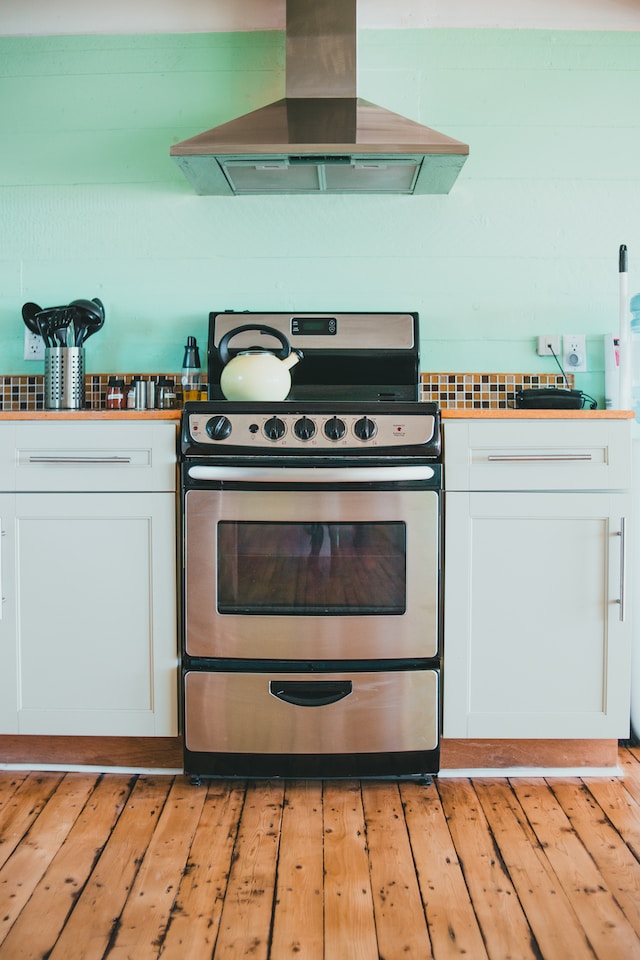The Ultimate Guide: Installing a Range Hood in 5 Easy Steps
Before starting, shut off the electricity to the circuit that supports your range hood. Also, this type of improvement often requires a permit, so check your local regulations for more information and to ensure you can get one.
Using the template that came with your hood, mark the area for the vent cutout. Using a level to ensure it’s straight is a good idea.
Measure the Space
The first thing to do is measure the space where you plan to install your range hood. This will help you determine the vent hole size needed and how high to mount the hood above your stove.

When choosing your hood before range hood installation Washington, DC, it’s also helpful to consider power, lighting, and venting. For example, some hoods come with built-in lighting, while others require venting to the outside through a wall or attic.
If your hood needs to vent through the roof, it’s best to consult a professional electrician for assistance, as this project is complex. Turn off the power to your breaker box and disconnect any electrical wiring from the old hood. Use the template included with your hood to mark where the vent will go on your wall.
Decide on a Design
Each home’s air quality is unique, but a range hood will clear grease smells, heat, and moisture and help prevent buildup on backsplash tile and countertops. Find a model that matches your cooktop and your kitchen’s decor style.
Then, choose whether you want sleek stainless steel or other metal that can be cleaned with a mild cleanser (see tips below). Also, decide on a ductless option if you prefer the look of the hood or have an insulated house.
Drill small access holes where you plan to cut the larger hole for the vent. This will ensure you don’t cut through existing plumbing or electrical wires. Next, use the hood’s template to mark where the vent will be installed in your wall or ceiling.
Choose a Model
Your range hood vents smoke, odor, and grease out of your kitchen, but it also can help tie your space’s decor together. And there is a wide range of styles to choose from, from dramatic focal points to subtle designs that complement your other fixtures.
Consider your home’s ducting and ventilation requirements to decide on the best hood for your space. If you opt for a ducted model, a vent cap should be installed at the end of your duct run to keep debris and bugs out. Duct length and turns and the size of your kitchen and home determine a range hood’s minimum CFM rating. A professional can help you calculate these factors and recommend the right hood for your space.
Decide on a Finish
The hood is a noticeable, attention-drawing design element, so choose one that complements your kitchen. Consider the overall look and colors in the space and cleaning and maintenance. For example, a stainless-steel hood will be easier to clean than copper or hammered nickel, which needs to be cared for regularly to avoid rusting.
Also, consider how the hood will be vented, which varies by model. Some hoods can be vented through an existing hole in your wall; others require ductwork that vents outdoors. Ensure you have the required ductwork before continuing with your project. If not, check the manufacturer’s instructions for a recommendation and check with your local building department regarding regulations on what is known as “makeup air.” A higher-powered hood typically requires ducting to vent outside the home.
Install
Before you mount your range hood, you must run ductwork to remove smoke and fumes from the kitchen. This project is for an experienced DIYer or should be left to a contractor.
Once the ducting is in place, ensure it is long enough to reach your range hood. If not, purchase a duct extension. Also, ensure you caulk the exterior opening to prevent ants and other pests from entering the home.
Unless you have a vented model, you must install charcoal filters and recirculation lines to capture grease, odor, and other air pollutants before recirculating the filtered kitchen air back into your home. Follow the manufacturer’s electrical instructions for connecting the black and white wires.
